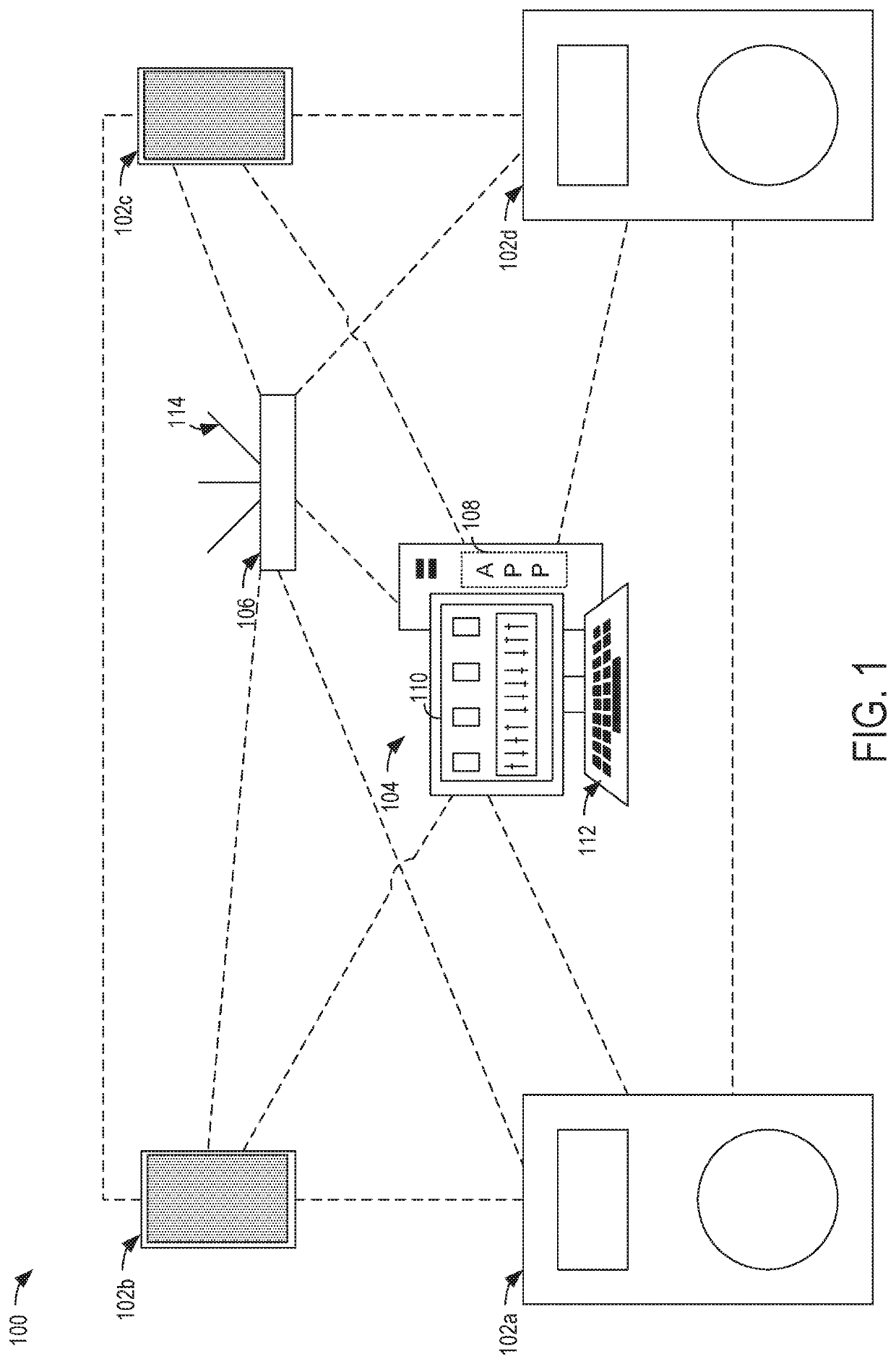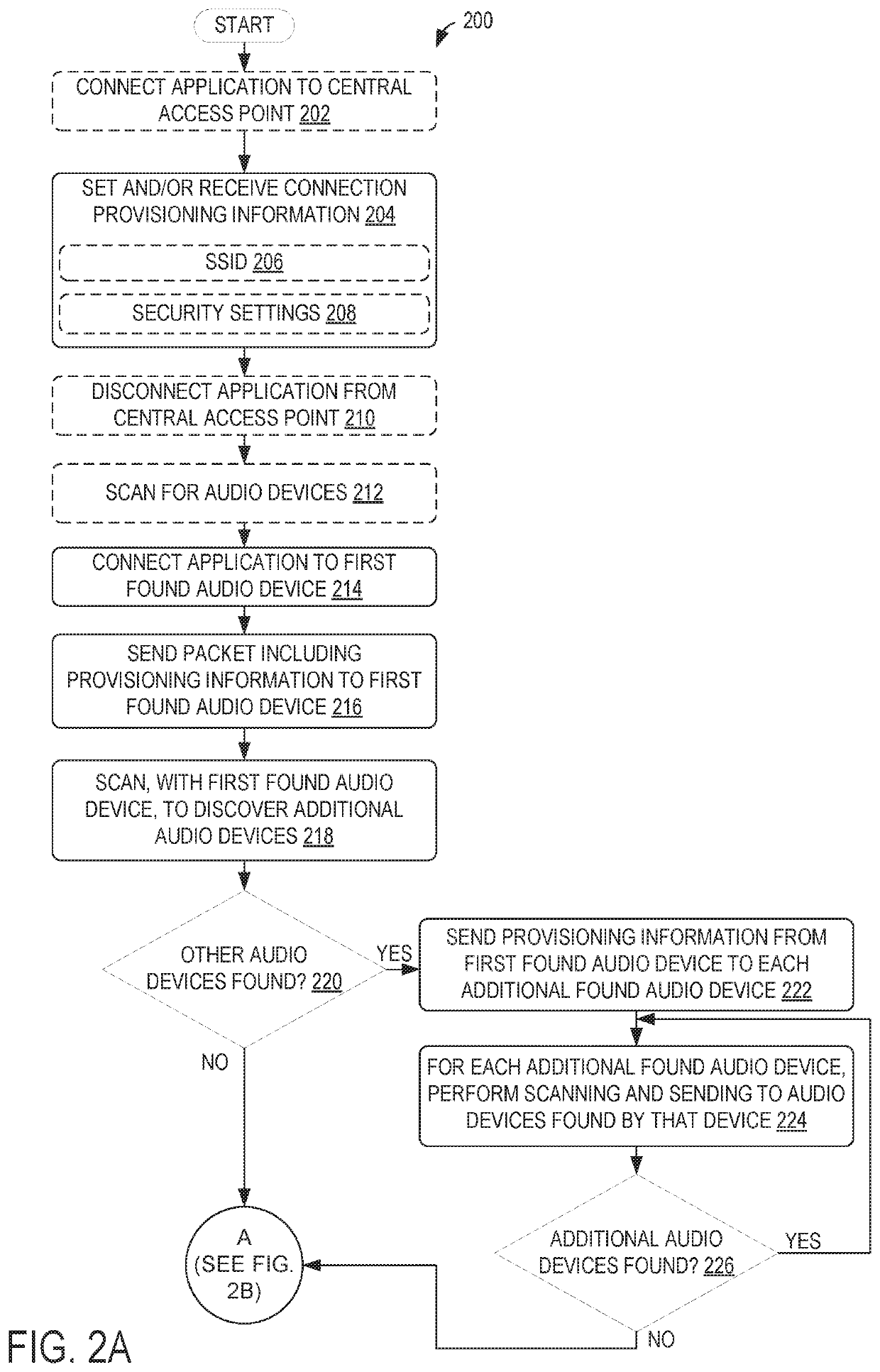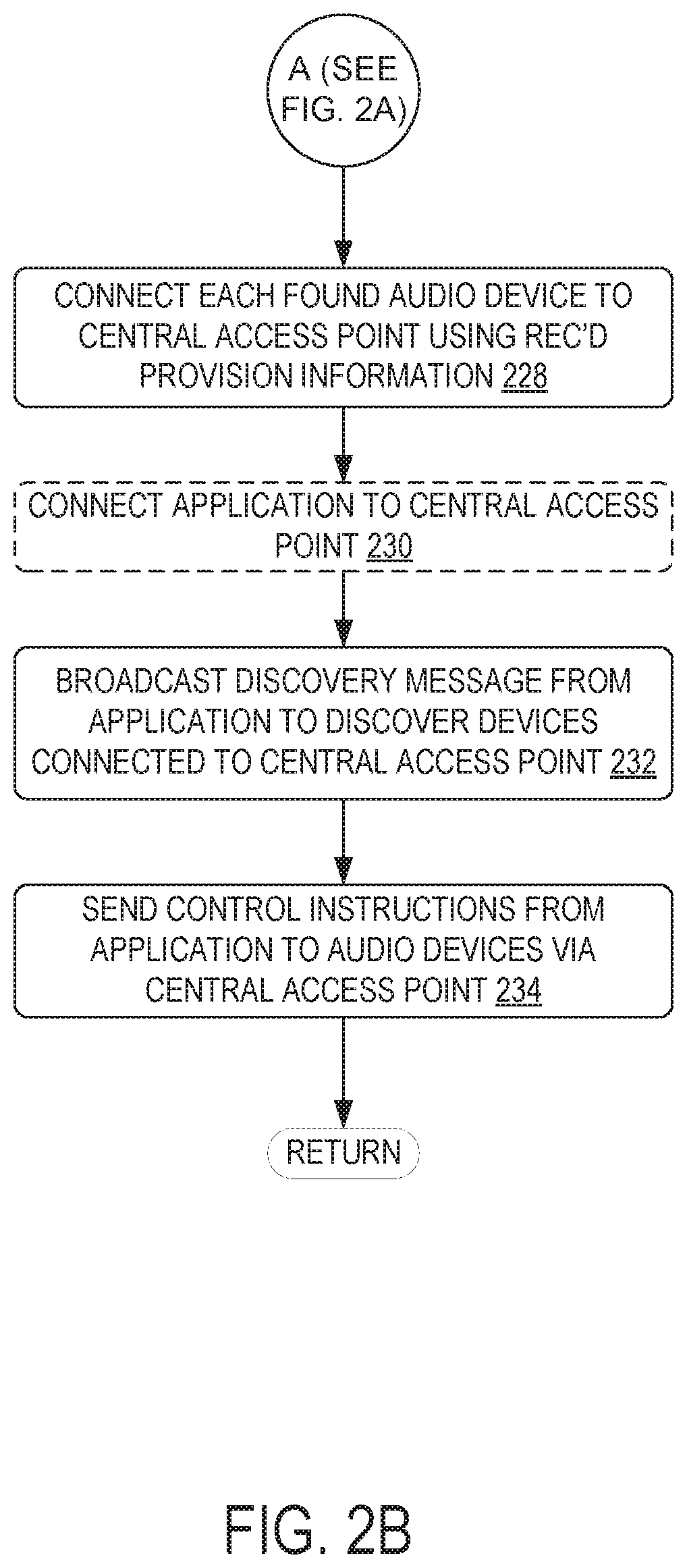[0003]Wireless audio devices may be connected to a network in order to receive audio data, commands, and / or other communication data from the network (e.g., from other audio devices or computing devices). For example, wireless audio devices may be controlled from a centralized mixing device to adjust volume, equalization, and / or other settings of the audio devices to provide desired audio playback. Wireless connectivity of the audio devices may increase flexibility of positioning of the audio devices relative to audio devices having wired connectivity. However, while an audio device may be connected to a wired network via a physical connection of a communication line, an audio device may be requested to provide identity, security, and other information when attempting to connect to a wireless network. Furthermore, the audio device may be within range of multiple wireless networks, so information regarding a wireless network that is connected to other audio devices (e.g., other speakers, mixers, audio receivers / processors, etc.) may be useful to distinguish a desired wireless network from other wireless networks.
[0009]Audio output environments may vary widely—from in-home entertainment systems to large-scale arena sound systems. In each case, the audio output environment may include multiple audio output devices (such as speakers or headphones), control audio devices (such as mixers), and / or other audio equipment. In order to provide distributed control over audio equipment in an efficient manner, the audio devices may be connected to the same network as one another (e.g., a wireless network). In this way, instructions may be sent from control audio devices to audio output devices and / or otherwise sent between audio devices in a given audio output environment. While such communication may enable instructions to be efficiently sent between devices, an initialization routine for connecting the audio devices to the network may be time-consuming and may rely on a large amount of user input and effort.
[0011]In order to address the above-described issues for connecting multiple audio devices to a network, the disclosure provides methods and systems for automatically connecting a group or set of audio devices to a central access point so that the devices may communicate with one another over a network serviced by the central access point. For example, the disclosure provides for sending provisioning information (e.g., information for enabling an audio device to identify and connect to a central access point, such as a service set identifier (SSID), security type, and / or security information) from a control device to an audio device. The audio device may then scan for other audio devices and propagate the provisioning information to the found audio devices. In this way, the audio devices of a given audio system may communicate provisioning information to one another in a daisy-chain arrangement, which simplifies and automate the process for the user and provides a much better user experience. The disclosed process thus provides a mechanism for individual devices to discover and provision devices in the group automatically. This frees the user from the burden of configuring each audio device individually and ensures that the provisioning information is accurate. Details regarding these and other methods and systems for automating audio device connectivity will be described below.
[0021]Another example of securing communications between network devices includes comparing an SSID (or a portion of an SSID) for an audio device requesting provisioning information to a list of expected SSIDs and / or an expected SSID parameter (e.g., an expected pattern of alphanumeric characters within the SSID). Yet another example of securing communications between network devices includes using encrypted packets to send provisioning information and / or other communicated information. For example, the audio devices of the network may have encryption / decryption information stored thereon (e.g., encryption key / protocol information), which is compatible with an encryption mechanism employed by the computing device 304 and / or application 308 and / or otherwise is known by the computing device 304 and / or application 308. In some examples, the encryption used to encrypt the provisioning information may be based on or may use the SSID (or a portion of the SSID) of the audio device receiving the communication. One or both of the initial discovery information (e.g., acquired during scanning) and the provisioning information communicated between devices of the network may be communicated in an encrypted format. For example, communication during discovery of the audio device(s) may be communicated as encrypted data, whereas communication of the provisioning information may be unencrypted and targeted only at the audio devices discovered using the encrypted discovery information. It is to be understood that any number and combination of the above-described security mechanisms may be used to secure communication between the first found audio device and the computing device 304 / application 308 and / or between each of the audio devices to provide multiple layers of security for the communications.
[0029]The appended information may help to track the flow of the provisioning information through the network, monitor a number of connections made between the first found audio device and other audio devices, and / or identify audio devices that are to be connected to the central access point.
[0031]As soon as an audio device receives provisioning information, that audio device may begin scanning for other audio devices and sending provisioning information to discovered audio devices, such that multiple audio devices may be scanning and sending provisioning information on the network at the same time. In this manner, many devices may be discovered quickly and efficiently, without additional user input. An example of “star” discovery is shown in FIG. 9, in which audio devices may discover further audio devices, which may, in turn, discover still further audio devices. For example, audio device 302a may discover audio devices 302e and 302f, and audio device 302f may discover audio devices 302g and 302h. While audio device 302a is discovering audio devices 302e and 302f, audio device 302b may (e.g., simultaneously and / or otherwise independently) discover audio device 302i, which may in turn discover audio devices 302j and 302k. Audio device 302k may further discover audio device 302l. Each connection between devices may be used to transmit provisioning information as discussed above.
 Login to View More
Login to View More  Login to View More
Login to View More 


